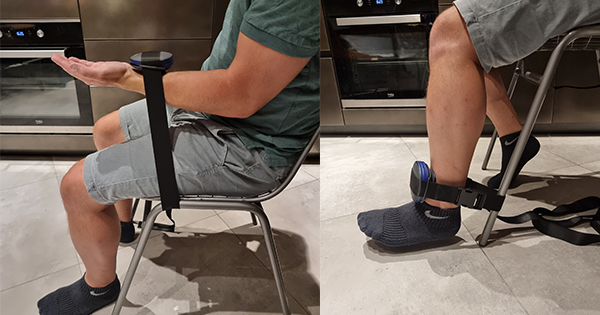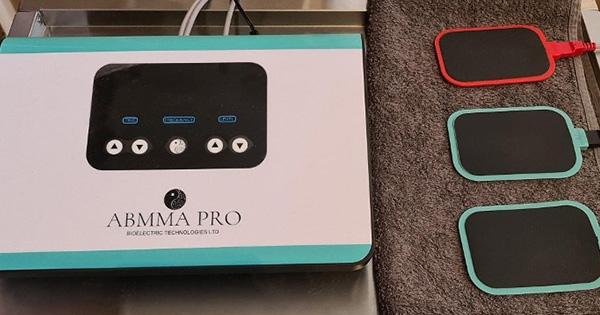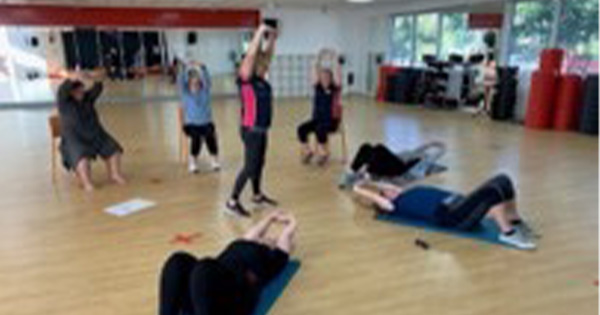Lymphoedema is a chronic lymphatic disease that results in an abnormal accumulation of protein-rich fluid in the interstitial space in one or more parts of the body that have damaged nearby lymph nodes or vessels (Lyons and Modarai, 2019). It can cause pain, discomfort, heaviness, tightness, distortion and reduced mobility and function of the affected limb (Hormes et al, 2010), and these symptoms heavily impact self-image, while also increasing anxiety, possible depression and frustration (Fu et al, 2013), affecting the psychosocial function and the QoL of patients (Vassard et al, 2010).
The most common cause of lymphoedema in the upper limbs (UL) is a side-effect of breast cancer and its treatment and affects up to 49% of this population (Gillespie et al, 2018; Liu et al, 2021). The lymphatic system serves as an important immune system organ, aiding fluid balance homeostasis, production of lymphocytes and distribution around the body (Lane, Worsley and McKenzie, 2005); therefore, when a part is compromised, that area of the body (usually an arm or a leg) risks infection or severe damage and accumulation of lymph fluid. Lymphoedema can be primary or secondary to other diseases, for instance following lymph nodes removal from the axilla in breast cancer surgery (Rockson, 2021). Lymph nodes are removed to prevent metastasis of cancer cells to other regions in the body through the lymph. In such patients, there is a more than 40% chance of developing upper limb lymphoedema (Hayes et al, 2008), as the body is unable to drain lymph from the arm to the axilla.
Currently most cases go underdiagnosed and untreated (Fu, 2014) as there is no cure (Borman, 2018). Management is with lymphatic drainage and compression by trained specialists through complex decongestive therapy (CDT; Malicka and Marciniak, 2015). The consensus is to advise patients to maintain an active lifestyle; however, there are limited guidelines on what types of activities may be beneficial (Lane et al, 2005). CDT includes patient education on skin management to avoid infection, manual lymph drainage to facilitate fluid movement and compression therapy through bandages and a flat knit garment once the oedema is controlled (Kim et al, 2010).
Exercise
The American College of Sports Medicine suggests that resisted exercise (RE) helps manage or treat many non-communicable diseases (Schmitz et al, 2010; Fiataraone et al, 2019). However, there is no extensive research published on people who have already been diagnosed with secondary lymphoedema.
It is thought that physical exercise reduces the cumulative exposure to oestrogen (Sesso et al, 1998; Rockhill et al, 1999) while RE was shown to lower chromosomal damage (Shaw and Shaw, 2021) preventing recurrence or further damage. This is achieved through improved haemodynamic measures, exercise capacity, improved body composition, lower cholesterol levels, improved cardiorespiratory endurance and improved muscle strength (Do et al, 2015; Shaw and Shaw, 2021).
Furthermore, repeated exercise bouts initiate anti-inflammatory forces (Archer and Blair, 2012; Scheffer and Latini, 2020), but for many years aerobic exercise (AE) was the main suggestion to patients with lymphoedema by professionals (Baldwin and Courneya, 1997; Awick et al, 2017).
Generally, RE was considered to be an exacerbating or a triggering factor for lymphoedema (Cheifetz et al, 2010; Paramanandam and Roberts, 2014) with guidelines often suggesting avoiding repeated strenuous activities or even avoiding lifting and carrying heavy bags or other objects with the lymphoedematous arm (Schmitz, 2010; DePolo, 2022). It was thought that inflammation and muscle damage shown in patients by an increase in their blood creatinine kinase levels following RE would increase lymphoedema (Tee et al, 2007).
However, in recent years, studies have found that the lymphoedema status is not affected by load or intensity and the creatinine kinase levels do not increase due to load.
In the study by Cormie et al, 25 lymphoedema patients undertook three different loaded exercises carried out for two weeks each. Venous inflammatory blood markers were measured prior to and 24 hours after the exercise sessions. No significant differences between the three resistances were found and only a non-significant increase of creatinine kinase after each exercise bout was reported. Moreover, no significant increases in the volume of lymphoedema following RE were noted (Cormie et al, 2016).
This was also supported by Cheema et al (2014). RE has higher compliance in breast cancer patients and led to improvement in their strength (Courneya et al, 2007), physical self-esteem (McAuley et al, 2000), and improved self-image (Courneya et al, 2007; Musanti, 2012). In view of these promising results, the current study focused on RE for its individualised benefits.
Combined CDT and RE appear to be effective in the management of breast cancer-related lymphoedema (Corum et al, 2021), regardless of whether pain is present or not. In their study, Corum et al. (2021), showed that both groups (pain versus no pain) had improved strength, limb circumference, and pain scores (in the pain group).
Similar results were also found by Kim et al (2010), who compared active RE to no RE. In addition, QoL improvements were higher in the RE group (Kim et al, 2010). All participants underwent CDT and general exercise prior to the intervention group proceeding with RE. Since improvements were seen in both groups, it is unclear whether the improved results were directly related to RE.
QoL scores after diagnosis of lymphoedema are low, both due to the actual cancer diagnosis, as also due to the physical impact of lymphoedema itself (Alfano et al, 2007). Physical activity seems to have a positive impact on health-related QoL (HRQoL) in non-communicable diseases, including cancer, and this seems to be directly related to increased exercise and lifestyle changes (Blanchard, et al, 2008).
Therefore, the aim of the current study was to establish whether moderate to heavy RE is safe to be performed at home by lymphoedema patients while also analysing whether such RE has beneficial effects on the QoL and function of this population. This study hypothesised that RE is safe to be performed by lymphoedema patients without supervision and that it has positive effects on their QoL and function. The null hypothesis is that RE is not safe to be performed without supervision and that it has no positive effects on QoL and function.
Methods
A total of 58 patients were enrolled initially. However, 17 were excluded, so 41 were matched and divided into two groups. Six patients were lost to follow-up, leaving 35 participants.
Eligibility criteria were: adult women with a diagnosis of secondary lymphoedema with unilateral arm lymphoedema present and who were in phase 2 of rehabilitation (stable lymphoedema and wearing compression garments).
Candidates were excluded from the study if they were having active treatment for cancer or had an active state of cancer; had an unstable medical condition, those presenting with bilateral lymphoedema (based on measurement and function comparison), newly diagnosed lymphoedema patients and patients who were undergoing complex decongestive therapy at the time of the study.
Informed consent was obtained from all participants.
Ethics approval
Ethical approval (EP 20/21 103) was obtained from the Research Ethics Approval Committee for Health (REACH) at the University of Bath and was also approved by the Russian Lymphology Association where the study took place. Participants were informed that they could withdraw from the study at any point of the research process with no questions asked.
Study design
Measurements
All participants underwent measurement of the arm circumferences, muscular strength of the biceps muscles and quadriceps muscles and all completed three questionnaires at baseline and after 6 weeks: disabilities of the arm, shoulder, and hand questionnaire (DASH), lower extremity functional scale (LEFS) and lymphoedema quality of life tool (LYMQOL).
QoL
QoL was measured using the self-administered LYMQOL questionnaire. This is comprised of 25 items incorporating functional, mood, symptoms and appearance scores, as well as the overall QoL scale. Each aspect has a maximum score of four while the overall QoL scale is out of ten. A score of four indicates that lymphoedema highly negatively affects that aspect of life, while in the overall QoL scale, the higher the score, the better the perceived QoL is.
Arm disability and function
The DASH outcome measure is a validated 30-item questionnaire designed to measure physical function and symptoms in participants with any disorder of the upper limb. The questionnaire asks the participants to rate their function or ability without regard to which arm they use to perform the task. The assigned values for all completed responses are summed and averaged, producing a score out of five. A higher DASH score indicates a greater level of disability experienced by the patient.
Function
The Lower Extremity Functional Scale (LEFS) is a 20-item questionnaire about the ability to perform daily tasks. The LEFS is used to evaluate the functional impairment of a patient with a disorder of one or both lower extremities, to monitor them over time and to evaluate the effectiveness of an intervention. In this study, it was used as a measure of the general physical ability of lymphoedema patients and to monitor any possible change with intervention.
Lymphoedema status
Limb circumferences were taken at 5 different areas: (B) hand (at base of the thumb), (C) wrist (at ulnar styloid), (D) forearm (6 cm distal to elbow fold), (E) elbow (at 4 cm proximal to elbow crease), (F) proximal arm (at 9 cm proximal to elbow fold). The measurement was done by the same lymphologist for all participants at baseline and within a week following the end of 6 weeks intervention.
Muscular strength measurement
Two main muscle groups were bilaterally measured using a hand-held digital dynamometer (Activforce2, Activbody, San Diego, US) with maximum isometric strength at 90° of flexion of the joint. The muscle groups assessed included the elbow flexors and the knee extensors. The dynamometer was placed at the wrist and the ankle (Figure 1). Five seconds of maximum contraction was used to measure the maximum isometric contraction of each group of muscles. Before performing the test, the participants were given 1 trial performance. The best of 3 contractions was recorded after analysing the curves for any error peaks. Participants were in a sitting position throughout the test and a 30-second rest was given between each measurement to avoid fatigue.
Intervention
Resistance exercise programme
The intervention included a resistance exercise programme for 6 weeks performed four times a week. The exercises were performed using TheraBand elastic bands of different resistance levels (four for each participant). The length was individually adjusted to the height of the person, and the instruction given was to keep a 7–8 out of 10 on an RPE scale throughout the exercise, indicating a hard to very hard exertion for a strength improvement regime. If the hardest band did not suffice, they were asked to add a second band with the hardest one. The exercises were divided into two sets and each set of exercises was to be performed twice a week on alternate days. The programme consisted of three sets of five or six exercises each time (Figure 2). The participants had links to YouTube videos of the exercise programme (https://youtu.be/DEr98c0svLc and https://youtu.be/Y2JlQvUKZTE) with all instructions in Russian. Rest was indicated with a timer on the screen.
Analytics
Statistical analysis was performed using SPSS version 28.0. Descriptive statistics, particularly means and standard deviations and confidence intervals were produced for demographic and clinical variables with a continuous scale (internal/ratio scale). The Mann-Whitney U test was used to test for differences in change scores (baselines to 6 weeks) across the intervention and control groups. The Wilcoxon signed-rank test was used to compare the difference between baseline and week 6 values of QoL, limb strength and circumferences measurements, LEFS and DASH; this was done separately for the control and the intervention groups.
For p-values of <0.05/0.01, we rejected the null hypothesis and considered as significant differences at the 95%/99% confidence intervals, respectively. The significance level or α value was 0.05, indicating the probability of rejecting the null hypothesis when it was true. The results were statistically significant, by these study values, when p<α. Generalised linear model tests were carried out to detect any statistically significant interaction effects between the group type (intervention versus control) and time (pre-intervention versus post-intervention).
Results
Participant demographics
The average age of the participants was 52.2 ± 10.9 years in the intervention group and 56.6 ± 10.4 years in the control group (Table 1). The BMI mean was 25.5 ± 3.6 kg/m2 and 25.9 ± 3.4 kg/m2, respectively.
At baseline assessment, no difference between the intervention and the control group was noted in terms of DASH, LEFS, LYMQOL (function, appearance, and mood), arm circumference and upper and lower limb strength measures. A slight difference was noted in the symptoms score (Table 2).
Comparison of the outcome measures
At the post-intervention evaluation, there was a significant difference between the intervention and control group in terms of strength of the affected arm and left lower limbs and a non-significant difference in the right lower limbs (Table 3). However, when analysed using a non-parametric Related-Samples Wilcoxon Signed Rank Test, there was a significant difference between both groups as the control group decreased in lower limb strength in both legs while the intervention group maintained their baseline strength (Table 4).
There was a significant decrease in the LYMQOL scores in all aspects (function, appearance, symptoms, mood and overall QoL) in the intervention group, while no significant difference was noticed in the control group except for function where scores increased implying a regression in function (Table 5).
There was a significant decrease in DASH scores in the intervention group but no significant change in the LEFS scores shown (Table 6).
A separate analysis of the groups confirms this through a Related-Samples Wilcoxon Signed Rank Test. There was a significant change within the intervention group in the DASH, and LYMQOL scores but no significant change in the LEFS scores (Table 7). However, there was a significant worsening of the function scores of the control group.
Changes in UL measurement
There was a significant decrease in arm circumference at points B, D, E, and F in the intervention group following the 6-week resistance exercise programme (Table 8).
Discussion
Decreased function of the affected arm is a significant dysfunction in lymphoedema patients. As hypothesised, we found that a structured resisted exercise programme using resistance bands resulted in meaningful change in all quality-of-life measures without the exacerbation of oedema status in breast cancer patients with arm lymphoedema. There was a significant improvement in the UL strength in the intervention group and while no significant change in the lower limbs was noted in the intervention group, a decrease in lower limb strength in the control group was recorded.
This study suggests that women with upper limb lymphoedema can safely perform unsupervised resisted exercise at moderate to high intensity following a stable lymphoedema status and that the resistance exercise enhances arm function without an increase in arm volume/ circumference, while also improving upper limb strength. The increase in UL strength, although significant, was minimal (2.03 ± 3.46 kg) and therefore should testing of other muscle groups including shoulder muscles and/or triceps would have been conducted, the results could have shown a different outcome. Feedback from the questionnaires and clinical experience reveals that women with arm lymphoedema are very apprehensive about using their limbs for heavy work or lifting bags for example (DePolo, 2022) and are frequently recommended to avoid repetitive, or prolonged upper body loading to prevent lymphoedema exacerbation (Schmitz, 2010). This was also the advice given by the lymphologists who recruited the participants in this study and many patients complain about difficulties in performing daily tasks such as brushing hair, cleaning or lifting shopping bags (Demark-Wahnefried, 2009). In conjunction with chemotherapy, this results in muscle atrophy, increased adiposity (Dieli-Conwright and Orozco, 2015), and a decline in function in the long term (Cešeiko et al, 2020). It is also often associated with the development of pain or feeling of heaviness in the shoulder, proximal arm and even more distal in some cases (Omar et al, 2020). The reasoning behind the prescription of resisted exercise lies in the fact that it increases lean muscle mass, decreases adipose tissue deposits, improves muscle strength, and endurance (McGuigan et al, 2009; Liu et al, 2022) which together are also expected to have beneficial effects on the physical functional ability of lymphoedema patients and result in an elevated maximal work capacity, meaning that daily tasks would require less effort with minimal discomfort (Fu et al, 2013).
Interestingly, the decrease in size in arm circumferences in the intervention group differs from other studies (Courneya et al, 2007; Sagen et al, 2009; Ammitzbøll et al, 2020) where other researchers only found no increase in volume. These results show that moderate to heavy RE intensifies the muscle pump function resulting in further drainage of stagnant lymph fluid in the affected limbs to nearby healthy lymph nodes, even after a stable limb size for many weeks/months. This further strengthens the point that RE is safe for women with stable lymphoedema and there is no evidence of increased risk of lymphoedema exacerbation. An important note though must be that all RE was performed in a flat knit, custom-made compression garment which allows the lymph to be redirected into the lymphatic system as the muscles have a higher external pressure to work against.
Resisted exercises with elastic bands have been shown to be a good alternative to exercising with free weights (Saeterbakken et al, 2014). The resistance bands were chosen due to their ease of accessibility and due to the Covid-19 situation as gyms were closed. Moreover, this allowed participants to perform the whole programme in the comfort of their homes.
The limitations of this current study were that it was conducted with a limited sample size of 35 and had a 6-week exercise period. A secondary reassessment after 3 months would be interesting to assess the maintenance of results or further changes. Strength assessment was done only on one muscle group each in the UL and LL. More muscle groups testing might show different results and therefore future studies are recommended to assess at least the triceps muscles since common feedback from the participants was that this area was the one, they felt most symptoms during their day and felt the exercises aided their symptoms.
The exercise programme in the intervention group was performed unsupervised and therefore adherence with the programme, exercise intensity and proper exercise technique could not be observed. This means that possibly participants did not maintain a moderate to high intensity or did not keep the frequency of four times a week exercise. Therefore, while convenient and innovative, perhaps supervised exercise using proper 1RM would give more accurate results. Future studies could also look at different intensities and rest periods to lead to optimised RE interventions in this population.
The researcher noticed that the exercise programme did not include any wrist and hand exercises directly; except for gripping the resistance band in itself, and this is a major affected area in these patients. Hence, structured exercise programmes should include such wrist and hand exercises to further improve the QoL and function in lymphoedema patients.
Conclusion
This study is one of the first to examine the safety of an unsupervised heavy resisted exercise in patients with secondary lymphoedema of the arm following a stable lymphoedema status in patients wearing a compression garment. It further showed that resisted exercise has the ability to further decrease limb circumference even after it has been stable for a long time. The RE had beneficial effects on the severity of lymphoedema symptoms, arm disabilities, and quality of life measures of the participants. Furthermore, this study confirms that, as per previous studies exercise involving the affected upper limb does not exacerbate arm lymphoedema. This study consequently offers a safe and structured exercise programme for specialists, physiotherapists, and lymphologists to be recommended to women with lymphoedema.







